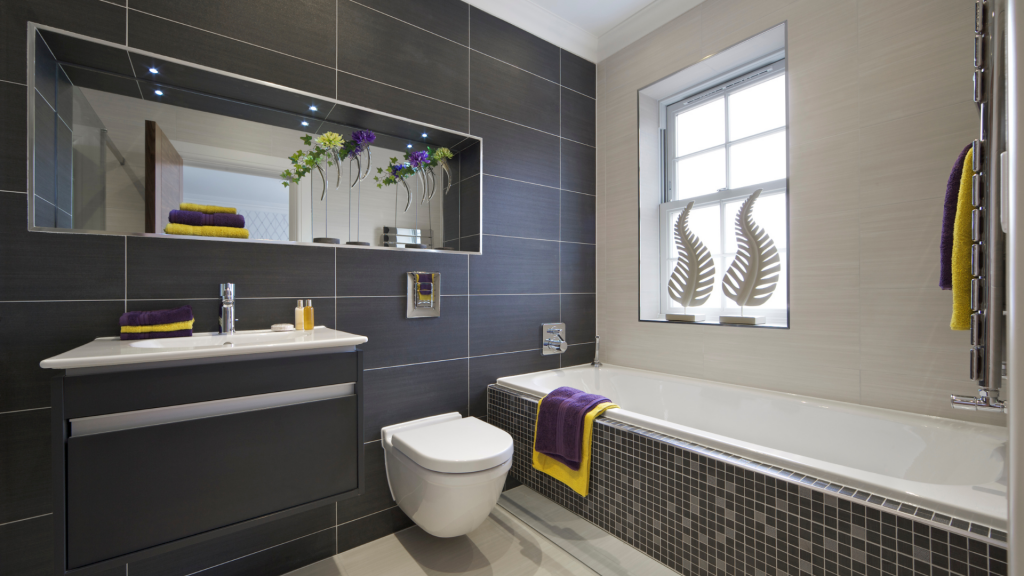Renovating your home is an exciting journey filled with countless decisions. From choosing the perfect color palette to selecting the right materials, every detail matters. But one crucial question often arises: do you tile walls or floors first? This seemingly simple query can have a significant impact on the final outcome of your project. Imagine, for instance, a beautiful kitchen makeover that ends with misaligned tiles due to an incorrect installation order. This is where a clear understanding of the best practices comes into play.

Image: hpconstructions.net.au
This guide delves into the intricacies of tiling, exploring the rationale behind the recommended sequence and providing expert tips to ensure a seamless finish. We’ll uncover the common pitfalls, shed light on the latest trends, and empower you to make informed decisions for a truly dazzling renovation.
The Case for Flooring First
Why Choose to Tile Floors Before Walls?
When it comes to a room’s design, there’s a good reason why tiling floors before walls often takes precedence. The key lies in the potential for disruption and the need for precise alignment. Imagine this: you’ve meticulously tiled your walls, creating a stunning backdrop for your kitchen’s new look. Now, you turn your attention to the floor, only to discover that the tile placement doesn’t quite match up with your wall tiles. This can lead to a visually distracting mismatch, especially if you’re working with intricate patterns or mosaics.
By tackling the floors first, you establish a solid foundation for your walls. This allows you to precisely align the wall tiles to the floor, creating a cohesive and visually pleasing aesthetic. It’s like building a house: laying a firm foundation ensures a stable and balanced structure, while the walls then seamlessly complement the base. This approach eliminates the risk of mismatched tiles and ensures that your vision translates seamlessly onto your walls.
Understanding the Rationale: Minimizing Disruption
Think of it this way: tiling the floors first creates a clean, uncluttered workspace. You can then move freely around the room, ensuring that the wall tiles are aligned perfectly with the floor tiles. It’s like drawing a straight line on a canvas – by first establishing a solid base, you can then freely add detail and dimension to your artwork.
Let’s face it, working with tiles can get messy. Mortar, grout, and tile scraps are inevitable byproducts of the process. If you tile the walls first, the chances of damaging them during floor tile installation significantly increase. The risk of splatters, spills, and grout dust contaminating the freshly finished wall tiles is quite real. This can lead to costly repairs and unnecessary rework, impacting both budget and timeline.

Image: www.thearches.co.uk
Navigating the Exceptions
When Walls Take Precedence
While flooring first is generally the recommended approach, there are exceptions to the rule. For instance, if you have a bathroom with a shower area, it’s often advisable to tile the shower walls first. This allows you to create a watertight enclosure, preventing water damage to the floor tiles during construction.
Similarly, if your project involves a complex design element, such as a tile border or an intricate mosaic, you might need to prioritize wall tiling. This ensures that the most demanding aspects of your design are executed with utmost precision and care. It’s crucial to assess each project individually and determine the most suitable approach based on the unique challenges and design elements involved.
Tips from the Professionals
Unveiling the Insider Secrets
Here are some valuable tips from experienced tilers to guide you through your tiling journey:
- Plan beforehand: Carefully visualize your design, measure the space, and select the tiles before you begin. This will prevent costly mistakes and delays during installation.
- Use leveling tools: Ensure that your floor and walls are level before starting the tiling process. This will guarantee a smooth and even finish.
- Choose the right adhesive: Opt for a high-quality, water-resistant adhesive specifically designed for tile installation.
- Spread adhesive evenly: Apply the adhesive evenly to the surface, creating a consistent layer to support the tiles.
- Space the tiles correctly: Leave a consistent space between tiles for grouting, ensuring a professional and aesthetically pleasing finish.
- Grout carefully: Apply grout using a trowel, ensuring it fills all the spaces between the tiles. Wipe away excess grout immediately.
Building a Stunning Finish
Remember, patience is key. Allow sufficient time for the adhesive and grout to dry fully before grouting and sealing your tiles. Also, consider using a sealant to protect your tiles from stains and water damage, especially in areas like bathrooms and kitchens. It’s a wise investment that will preserve the beauty and functionality of your tiled surfaces.
FAQs on Tiling Your Way to a Stunning Finish
Q: Can I tile walls and floors at the same time?
A: While technically possible, it’s generally not recommended. This approach increases the risk of misalignment, damage to already installed tiles, and a complicated workflow. It’s best to prioritize one surface at a time to ensure a clean and seamless finish.
Q: What if I’m using large format tiles?
A: Large format tiles can be tricky, and it might be wise to install the floor first. Their sheer size makes them more susceptible to damage from a subsequent wall tiling process.
Q: Is there a specific type of grout I should use for walls vs. floors?
A: While many grouts can be used for both walls and floors, there are specialty grouts designed for specific surfaces. Consult with a tiling expert or your tile supplier to ensure you select the appropriate grout for your project.
Do You Tile Walls Or Floors First
Wrapping Up: The Key to a Seamless Tiling Experience
Ultimately, the decision to tile walls or floors first depends on various factors, including the design complexity, the size of the tiles, and the specific requirements of your project. However, by understanding the benefits of flooring first and following the expert advice outlined in this guide, you can embark upon your tiling journey with confidence.
Do you have any insights or experiences to share about tiling your own home? Let’s discuss in the comments below!





